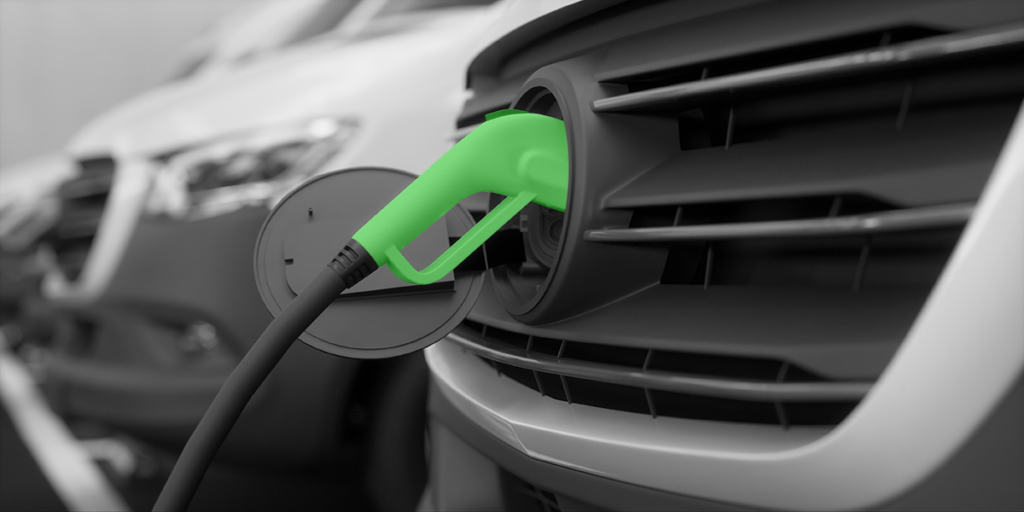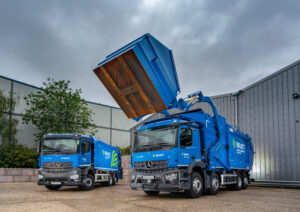Fleet managers transitioning large fleets of internal combustion engine vehicles to electric must manage the large-scale installation of varied charging infrastructure, often across multiple sites, while juggling operational requirements. Karolina Younger from Jumptech explains how electrification management platforms can help simplify and speed up EV infrastructure installations for fleet managers.
Fleet managers have always prioritised keeping vehicles on the road. Making those vehicles electric, however, is a recent development. Moving from internal combustion engine vehicles (ICEs) to electric vehicles (EVs) is a complex transition that involves many processes, people, and technical requirements.
While the transition is complex for almost all fleets, it is also necessary. Local authorities and large companies have net-zero targets that must be met. And although it was extended in late 2023, the 2035 ban on the sale of ICE vehicles is still a hard deadline on the horizon.
As charging infrastructure projects become increasingly complex, with installer shortages and bottlenecks in grid connection capacity for all forms of low-carbon technologies, businesses and installers are finding that digital platforms can make the process much easier.
The mounting pressures for new EV infrastructure
Different fleet types, sizes, and operational requirements significantly impact the charging infrastructure types required to keep vehicles on the road. As the types of infrastructure change, so does the complexity of each project.
For example, in larger organisations, the sheer size of the fleet will have an impact on infrastructure requirements. Last-mile-delivery fleets consist of hundreds of 3.5-tonne vans and need charging infrastructure capable of taking an entire fleet from zero to 100% overnight. Because of the power demand size, depots will require district network operator (DNO) upgrades. The UK’s electrical distribution grid was never built to handle charging such fleets, so depots need increased capacity beyond their basic grid infrastructure. And getting a DNO upgrade is a significant project in itself.
There have been widely documented delays in getting upgrades to the grid for new EV grid infrastructure projects, which has already delayed some projects beyond 2030. According to the Internal Energy Agency, delays like this put the climate efforts of all organisations at risk.
Bespoke solutions
Bespoke charging solutions involving several pieces of low-carbon technology can help organisations avoid an electrical infrastructure upgrade.
For example, mixed council-run vehicles like street sweepers and traffic management vehicles may need to charge overnight but require less power overall than a large delivery depot. This could make battery storage and electric vehicle charging a better alternative.
Or, if the vehicles are attached to an HQ building, a load management system that diverts power away from non-critical assets to the EV infrastructure overnight may work better. Each option, however, is another layer of complexity to a project and another process, making the transition more challenging.
Then there’s the issue of multiple sites, which some larger operators must deal with. Managing multiple sites requires that operators ensure consistency and conformity when many installers are used. Standardisation is a necessity, but every location throws up unique challenges.
Time’s up on delaying installations
On top of the complexity of the process is the pressure to transition ICE vehicles to electric more quickly than ever. Many private-sector organisations have net-zero goals that they must meet, while over two-thirds of UK local authorities are aiming to be net zero by 2030. And this doesn’t even take into account the introduction of new local regulations, such as low emissions zones, which require rapid fleet changes.
For example, the introduction of Edinburgh City Council’s LEZ in 2023 meant almost 300 of its council fleet vehicles were no longer compliant.
Ofgem reforms introduced at the end of 2023 will hopefully make getting a new grid connection faster. However, an installer shortage and a skills gap for new engineers remains, meaning existing installers are stretched thin. According to the European Investment Bank, 80% of companies and 60% of local authorities believe there’s a skills shortage preventing climate change projects from progressing.
Meanwhile, research from PWC suggests that an additional 200,000 skilled workers are needed to keep the UK energy transition on track.
Solutions that simplify and speed up the management and installation of new EV charging infrastructure are needed to overcome these issues, and new electrification management platforms can do just that.
Digital electrification management platforms
Digital electrification management platforms help all stakeholders navigate the multi-faceted processes of installing EV charging infrastructure, whether this is for small fleets, specialist fleets, or fleets that require at-home charging. A single platform centralises all of the information and processes, mitigating potential friction between stakeholders and simplifying project management.
These platforms are a proven technology that can help stakeholders track the essential elements of the installation process and automate many laborious tasks that are often overlooked or introduce errors. Though EV installers are thin on the ground, electrification management platforms can help shorten the timeframe of fleet transition projects by enabling the available installers to do more with less.
Centralised platforms – accessible to fleet managers, installers, and other key stakeholders – facilitate collaboration and communication, ensuring that all stakeholders in the process are kept informed about the progress of installations. Even better, more transparent communication empowers fleet managers by delivering greater oversight into the development of installation projects. Every time a new phase of the project begins or critical documentation is uploaded to the digital platform, the fleet manager receives a notification.
When new work is scheduled, fleet managers will also receive communications through the management platform, letting them proactively adjust their fleet schedule to work around potential disruptions.
Connecting all stakeholders within the clean technology sector, electrification management platforms help fleet managers access bespoke solutions for their complex sites.
Jumptech was created to take the hassle out of the low-carbon technology installation process, making it easier for all stakeholders to quickly and efficiently install low-carbon devices, such as fleet EV charging stations, batteries, or on-site solar generation.




